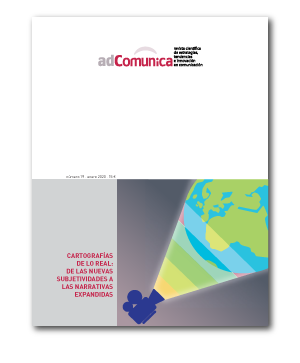Diferentes estrategias en Twitter de los principales líderes políticos españoles en las elecciones generales de 2019 (28A)
##plugins.themes.bootstrap3.article.main##
Resum
El objetivo de este trabajo es explorar el uso que hicieron de Twitter los cuatro principales líderes políticos españoles durante la campaña de las elecciones generales españolas desarrollada entre el 12 y el 26 de abril del 2019. Se analizó su timeline, tanto cuantitativo (de su participación), como cualitativo (categorizando el tono, la orientación o la temática abordada). El corpus de este estudio está compuesto por un total de más de 700 contenidos cuyos resultados evidencian: 1) la existencia de una estrategia de comunicación política en Twitter; 2) la interacción y dinamización del diálogo con diferentes estrategias e intensidad; 3) la autopromoción a través del propio texto, material audiovisual y enlaces compartidos con el ánimo de potenciar, principalmente, actividades propias de campaña; 4) un alto porcentaje de mensajes que no se corresponden con las preocupaciones de su público objetivo, aunque con diferencias existentes entre los candidatos. Queda demostrada la existencia de un uso estratégico de Twitter en el que aún existe un amplio margen para explotar el potencial interactivo y cuyo contexto electoral ha girado en torno a un monólogo promocional más próximo a sus agendas temáticas que a los temas de interés de su electorado.
Descàrregues
##plugins.themes.bootstrap3.article.details##
1. Política propuesta para Revistas que ofrecen Acceso Abierto
Los autores que publican en esta revista están de acuerdo con los siguientes términos:
- Los autores conservan los derechos de autor y garantizan a la revista el derecho de ser la primera publicación del trabajo al igual que licenciado bajo la licencia CC BY-SA, que permite a otros compartir el trabajo con un reconocimiento de la autoría del trabajo y la publicación inicial en esta revista.
- Los autores pueden establecer por separado acuerdos adicionales para la distribución no exclusiva de la versión de la obra publicada en la revista (por ejemplo, situarlo en un repositorio institucional o publicarlo en un libro), con un reconocimiento de su publicación inicial en esta revista.


